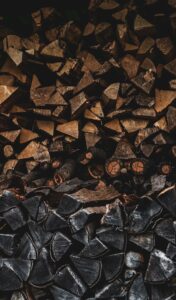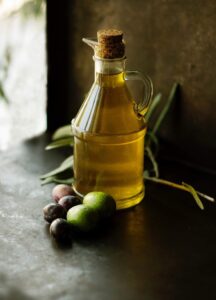PRESERVATION OF TIMBER
Timber has to be preserved from moisture, dry rot or internal decay and from the attacks of insects. Paint on seasoned timber preserves it from moisture and extends its life indefinitely if renewed periodically.
Many processes have been adopted for protecting the timber from dry rot and insects by impregnating it with chemical substances. Tarring, Charring, Painting and creosoting are the usual methods of preservation.
Also read: Defects in timber
Types of Preservatives or Preservation of timber:
1. Ascu treatment
2. Chemical salts
3. Coal tar
4. Creosote oil
5. Solignum paints
1. Ascu treatment:
The act is a special preservative which is developed at the Forest Research Institute, Dehradun. Its composition is 1 part by weight of hydrated arsenic pentoxide, 3parts by weight of copper sulphate & 4parts by weight of potassium dichromate.
2. Chemical salts:
These are water-born preservatives and they are mostly salts dissolved in water. The usual salts used are copper sulphate, mercury chloride, sodium fluoride and zinc chloride.
The solutions are prepared from these salts and they are applied on the timber surface. These preservatives are odourless and non-inflammable.
3. Coal tar:
The timber surface is coated with hot coal tar with the help of a brush. The coal tar has an unpleasant smell and appearance. It makes timber unsuitable for painting.
Hence the charring is adopted for frames of doors and windows, tough timber work, etc.
4. Creosote oil:
In this method, the timber surface is coated with creosote oil. The process is known as the creosoting or bethel’s method of preservation of timber. The creosote-treated timber is free from the attack of white ants.
The cresting doubles the life of the timber and is generally adopted for piles, poles, railway sleepers, etc.
5. Solignum paints:
These paints preserve the timber from white ants as they are highly toxic in nature. They can be mixed with colour pigments and applied in the hot state with the help of a brush.
Methods of preservation:
- Brushing
- Charring
- Dipping and steeping
- Hot and cold open tank treatment
- Spraying
- Fireproofing of timber
- Brushing:
The preservative is applied on timber surfaces by brushes. The cracks should be filled before applying preservatives. One or more coats of preservative may apply. This method is most commonly used for the preservation of seasoned timbers.
- Charring:
In This method, no preservative was applied. The surface charred is kept wet for about half an hour and is burnt up to a depth of about 15 mm over a wood fire and then cooled with water. Due to coal is formed on the surface.
This layer act as a preservative & it is not attacked by white ants, fungi, etc. The process of charring is adopted for lower ends of posts for fencing. telephone etc which are embedded in the ground.
- Dipping and steeping:
Timber may be dipped or soaked in solution preservative or wetting of timber with preservative may be carried out for a few hours to days or weeks. Preservative penetrates inside the timber in a better way as compared to spraying.
- Hot and cold open tank treatment:
The timber is submerged in a tank containing a solution of preservative which is heated for a few hours at a temperature of 85°C to 95°C. The tank was then allowed to cool down gradually. This method is effective in giving protection to the sapwood. Injecting under pressure: The preservative is injected under pressure into the timber. This method is usually adopted in creosoting. Also read: Seasoning of timber
- Spraying:
A pistol is used to spray the solution of preservative on the timber surface under pressure. This method is effective & better than brushing.
- Fire Proofing of timber:
Timber cannot be made completely fireproof, however, by treating as below it can be made fire resistant to a sufficient extent.
Soaking timber in ammonium sulphate, ammonium chloride, ammonia phosphate, sodium arsenate, zinc chloride etc. or spraying on timber, a solution of sodium silicate, potassium silicate or ammonia phosphate etc. imparts fire-resisting properties.







3 thoughts on “Preservation of timber | Methods – civil learners”